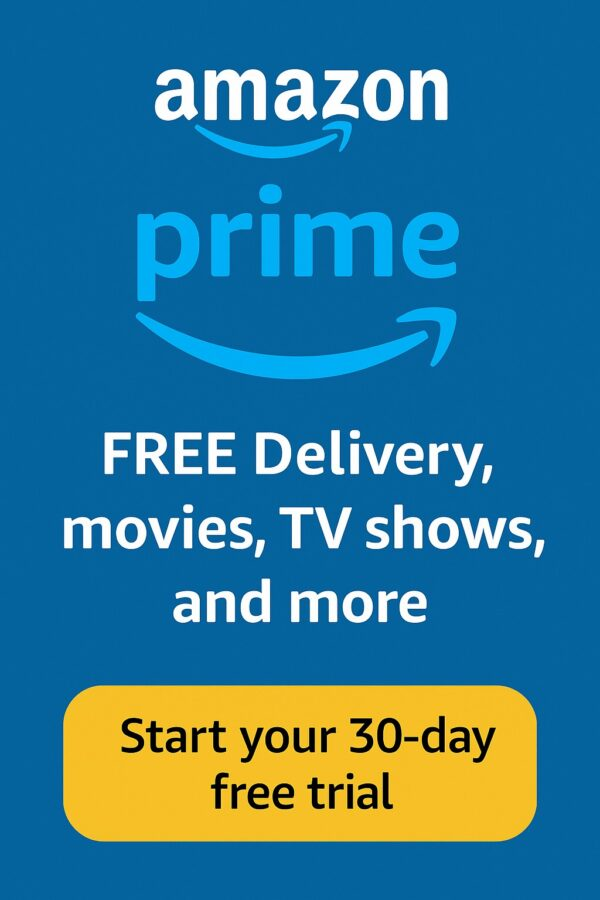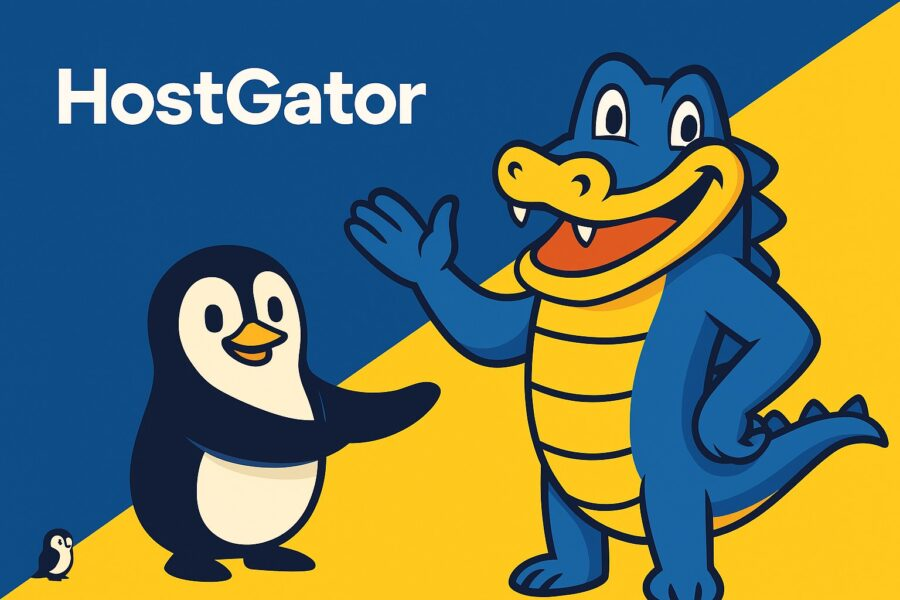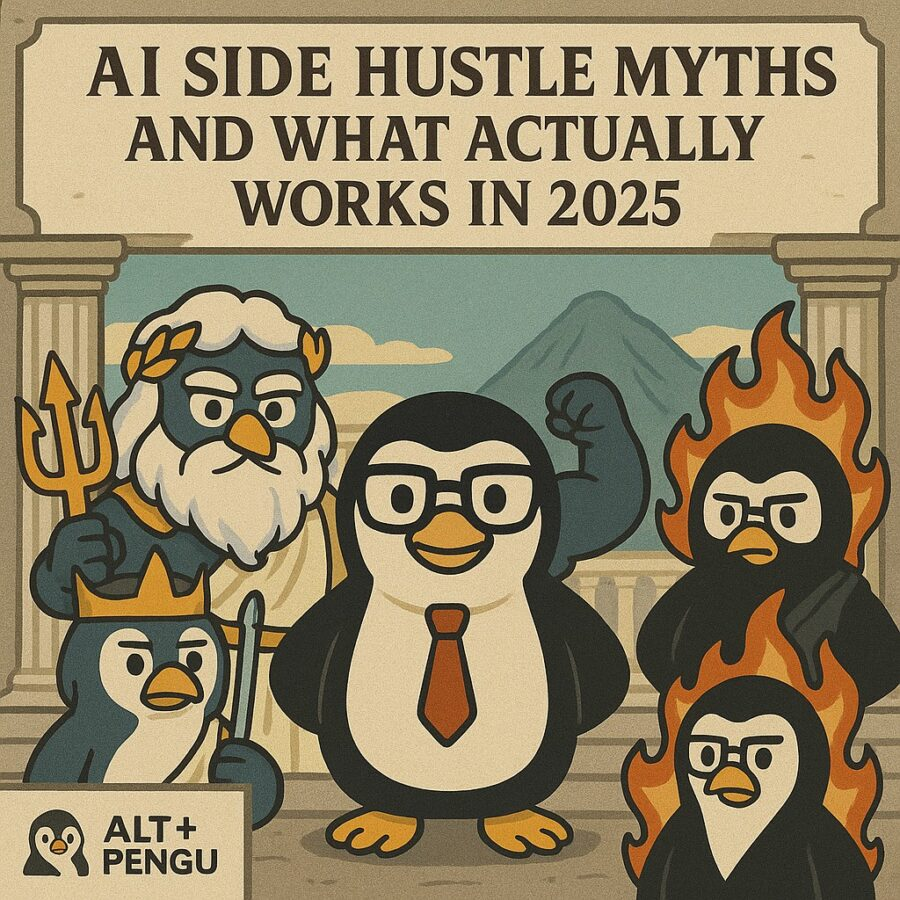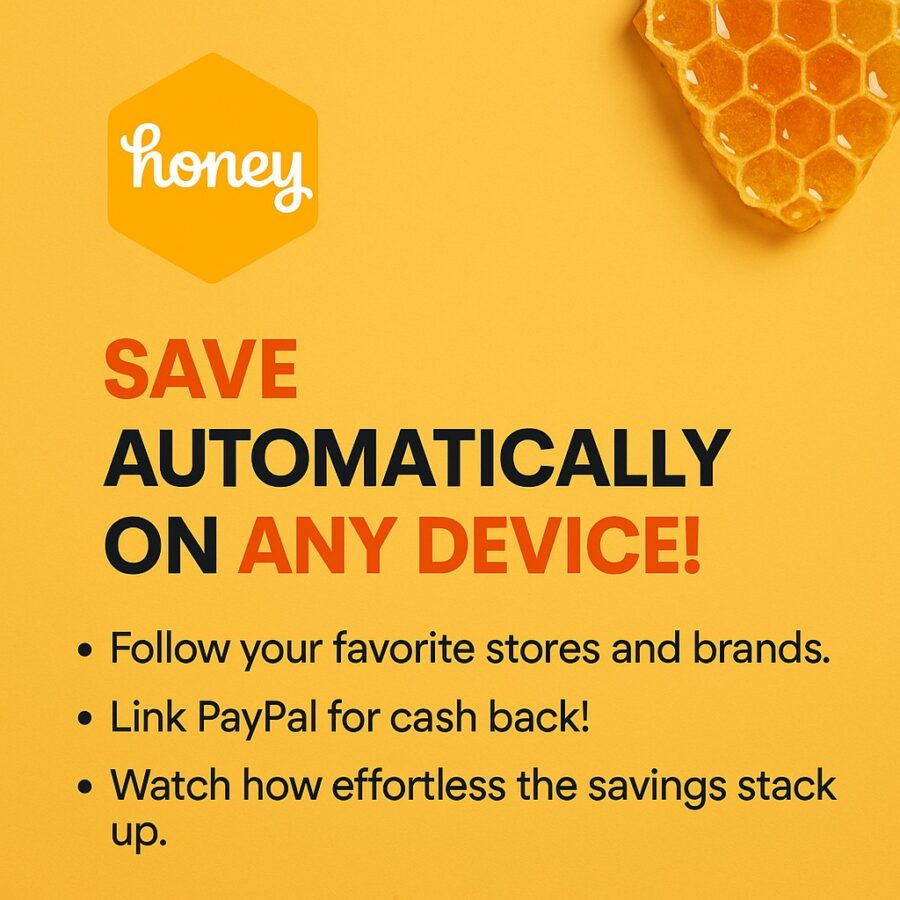Views: 4
A lot of posts promise shortcut riches with a screenshot and a breathless caption. Reality is quieter. Results arrive when your system is boring and repeatable. This guide tackles the loudest claims with evidence and then lays out what to build next. The SEO key phrase for this article is “AI Side Hustle Myths And What Actually Works In 2025.” You will see it used throughout to reinforce focus and search clarity.
Why the hype feels louder in 2025
AI tools are now common in small business and creator workflows. Surveys and platform reports show broad adoption across at least one business function and growing investment in sales, marketing, and service operations. That mainstream use explains why so many “easy” ideas circulate. It also explains why platforms have tightened monetization rules and quality bars. (Shopify)
Below I break down ten frequent myths, then map them to practices that actually perform this year.
Myth 1: “You can automate faceless YouTube and collect passive income in a month.”
Why it is misleading: YouTube has explicit guidance on reused or low effort content. Monetization is possible when there is meaningful transformation. Policy updates in 2025 further targeted unoriginal, repetitive uploads that do not add value. Channels using AI can qualify only when the creator’s input is clear and original. (Google Help)
What actually works in 2025: Build editorial formats that show point of view. Use AI for research and scripting. Add new footage, voice, or data. Treat B-roll generators and text-to-speech as drafting tools, not the finished product. In practical terms, that means a weekly show with a consistent segment run. For example, “Tool of the Week,” “Bench Test,” and “Listener Fix.” That structure keeps production tight while still meeting YouTube’s requirement for meaningful difference.
Myth 2: “Everyone with AI earns four figures per week.”
Why it is misleading: Creator and freelancing reports show a wide earnings range. A small minority crack six figures. Many earn modest amounts at first. Medians sit far below headline claims. Marketers intend to keep or increase creator budgets, but that spend concentrates around proven formats and measurable conversions. Translation: results are available, but they track to skill, niche fit, and distribution, not lucky prompts. (G2 Learn Hub)
What actually works in 2025: Approach “AI Side Hustle Myths And What Actually Works In 2025” with a realistic income arc. Package services that directly save time or create sales. Publish proof in the form of before and after deliverables. Lead with one small, fixed price outcome that closes quickly. Then expand to a retainer or a template license when you have three happy clients.
Myth 3: “Platforms do not care how you make it as long as you post a lot.”
Why it is misleading: Major platforms now push for originality and higher effort. YouTube emphasizes visible transformation for reused media and will remove monetization when content is repetitive or low quality. This policy mood affects Instagram, TikTok, and shorts ecosystems because brands look for safe placements and real lift per dollar. (Google Help)
What actually works in 2025: Choose a single platform to master. Learn its policy notes by heart. Design formats that return each week with fresh analysis or data. Batch research with AI, then record human takes that tie facts to a point of view. Treat AI as an assistant, not the host.
Affiliate Link
See our Affiliate Disclosure page for more details on what affiliate links do for our website.

Myth 4: “Dropshipping with AI is the fastest win for beginners.”
Why it is misleading: Commerce in 2025 favors merchants who improve discovery, service, and retention. Tools are stronger, but so is competition. Shopify’s 2025 coverage shows merchants using AI for search, personalization, and content, while Shopify itself has invested in AI search through acquisitions. That is good for serious operators. It is not a magic cruise control for low trust stores. (Shopify)
What actually works in 2025: Build one product with a clear utility and fast delivery. Use AI to write a support knowledge base, build a returns policy, and tune on-site search. Automate three emails only: pre-purchase questions, shipping updates, and post-purchase care. These reduce churn and refund risk more than another reel ever will. (Shopify)
Myth 5: “The side hustle is the niche. Any AI gig sells.”
Why it is misleading: Clients buy outcomes. Reports on the future of freelance work show a rising segment of “AI-enabled freelancers” who present themselves as a partnership between skill and tools. Buyers pay for that pairing when it solves a specific problem. Generalists who promise “all AI services” struggle to signal value. (Upwork)
What actually works in 2025: Pick one measurable pain in one market. A lawn care owner needs a booking fix and a follow-up workflow that gets five new reviews per month. A dental office needs no-show reduction and insurance pre-check scripts. Your offer should address a single metric and ship in seven days.
Myth 6: “You must build a new model to make real money.”
Why it is misleading: Training foundation models is costly. The profitable lane for solo operators is applying existing models to packaged use cases, or productizing narrow fine-tunes and prompts. Even marketplaces lean into packaged expertise. Some freelance platforms are testing ways for top talent to productize their own models for client use. That pattern favors creators who bake their know-how into systems, not those trying to reinvent a lab. (The Verge)
What actually works in 2025: Create a playbook that pairs a model with a workflow. For example, a “Concierge Agent” that books appointments, issues invoices, and sends reminders, or a “Listings Refiner” that produces compliant product pages with image variations and policy checks. Sell the outcome and maintain the playbook as a subscription.
Myth 7: “AI Side Hustle Myths And What Actually Works In 2025” says you need a massive audience first.
Why it is misleading: Many healthy micro businesses grow on the back of 30 to 300 true buyers, not viral reach. Creator economy data shows brand budgets are healthy, yet revenue concentration remains real. You do not need a giant audience to earn a steady side income if your value is specific and your delivery is fast. (G2 Learn Hub)
What actually works in 2025: Build a small client list by solving the same problem repeatedly. Share compact proof posts. Offer a one hour audit product that ends with a written plan and a booking link. Convert a share of those audits into builds.
Myth 8: “AI Side Hustle Myths And What Actually Works In 2025” must include print-money prompts.”
Why it is misleading: Prompts without process drift. Stable results require constraints, data, and acceptance criteria. The businesses that scale put prompts inside checklists, templates, and agents that verify outputs.
What actually works in 2025: Turn a loose prompt into a checklist. Define role, goal, inputs, constraints, and output format. Add an evaluation step that checks key fields before delivery. This single habit shortens revisions and improves trust on every job.
Myth 9: “Corporate buyers are not using AI, so there is no budget.”
Why it is misleading: Adoption continues to rise. Multiple 2025 summaries cite strong use of AI in at least one function, with IT and marketing as the most active areas. The result is practical budgets for contractors who improve content quality, imagery, personalization, and service response time. (Shopify)
What actually works in 2025: Offer a two week sprint with a single KPI. Examples: reduce average first response time by 40 percent using templated replies and routing, or increase product image coverage to 100 percent with compliant AI upscales and alt text. Pitch to owners who have already tried to do it in house and stalled.
Affiliate Link
See our Affiliate Disclosure page for more details on what affiliate links do for our website.

Myth 10: “The only path is becoming a content creator.”
Why it is misleading: Content jobs have grown, but service and product roles also benefit. Digital creator employment expanded since 2020, yet thousands of non-creator roles in the internet economy thrive as well. You can build a tidy side business behind the camera. (Axios)
What actually works in 2025: Run a behind-the-scenes practice. Examples include product feed cleanups, schema fixes, review response automation, inbox triage, and customer interview summaries. These pay because they affect revenue and save hours.
Five side hustle models that perform this year
The next sections translate “AI Side Hustle Myths And What Actually Works In 2025” into buildable systems. Each model includes deliverables, proof, and a simple plan.
1) The Appointment-to-Invoice Concierge
Who buys: Busy local services, solo consultants, and boutique clinics.
What you deliver: A booking link, calendar events with .ics attachments, email and SMS reminders, and an invoice that sends post-appointment.
Why it works: No-show reduction and faster cash collection are simple to measure.
How to validate: Book five test appointments for your own calendar. Verify that the .ics file includes explicit alarms and that email and SMS fire on time. Publish the logs as proof. (Google Help)
2) The Listing Polisher for Small Shops
Who buys: Indie ecommerce stores and Etsy sellers.
What you deliver: Title, description, bullet points, alt text, and size charts. Options for multilingual copy.
Why it works: Better discovery, fewer returns, and faster support replies.
How to validate: Take five listings. Measure before and after views and conversion rate where available. Use AI for drafts, then apply brand voice rules and policy checks. Commerce teams already plan to lean on AI for content and image enhancements this year. (Shopify)
3) The Video Research Producer
Who buys: Busy creators who need scripts that pass platform policies.
What you deliver: A research packet with sources, a 5-minute script, B-roll plan, and callouts for original commentary.
Why it works: It makes the creator faster and keeps monetization safe by ensuring meaningful transformation.
How to validate: Produce three packets for a small creator. Track their time saved and RPM stability after the policy changes. (Google Help)
4) The Review Engine for Local Firms
Who buys: Trades, clinics, coaches, and real estate teams.
What you deliver: A post-service text and email, a landing page for reviews, and replies that feel human.
Why it works: New reviews lift local pack visibility and close rate.
How to validate: Offer a 30 day pilot and show net new reviews plus response times. Use SMS carefully with clear opt out, and WhatsApp templates in regions where it is standard. (Upwork)
5) The Creator CRM Cleanup
Who buys: Mid-tier creators with sponsor interest but scattered assets.
What you deliver: A sponsor kit, a rate card, and a pitch workflow. You also provide a content calendar that quantifies deliverables.
Why it works: Budgets exist. Buyers need clarity and assets they can forward to stakeholders. Most creator revenue still leans on brand deals. (G2 Learn Hub)
Affiliate Link
See our Affiliate Disclosure page for more details on what affiliate links do for our website.

Pricing that matches reality
“AI Side Hustle Myths And What Actually Works In 2025” should include specific price structures. Here are three that map to buyer comfort.
- Audit then build: A paid audit at a fixed fee. If the client proceeds, credit the fee toward the build.
- Starter pack: One outcome for one price. For example, a full booking stack in a week.
- Care plan: A simple retainer that covers checks, updates, and a monthly improvement.
This protects your time while giving clients an easy yes.
Your seven day build plan
A good side hustle launches small and expands only after proof. Use this plan for the first version.
Day 1: Define the single outcome. Write a one paragraph outcome statement. Identify the KPI you affect.
Day 2: Draft your playbook. Turn prompts into checklists. Add a basic evaluation step that confirms key fields.
Day 3: Build the skeleton. Create a test calendar, a test inbox, and a dummy payment flow.
Day 4: Run a closed pilot. Use your own details or a friendly business. Capture logs, screenshots, and results.
Day 5: Write the sales page. One headline. Three bullets. One proof block. One call to action.
Day 6: Do outreach. Contact ten prospects with a short message that states the outcome and the time frame.
Day 7: Deliver the first job. Ship and collect a testimonial. Update the playbook.
Tie every step to the same core outcome. That is how small systems become strong businesses.
Tool choices without the noise
You can build “AI Side Hustle Myths And What Actually Works In 2025” systems with any modern stack. A few observations can save you time.
- Adoption is high, but trust still matters. Buyers want clarity on inputs, outputs, and data handling. Use standard APIs when possible. Reference official docs when clients ask about compliance and support. (Shopify)
- Commerce tools are evolving fast. Shopify’s guidance shows where merchants are spending time. Align your offer with those pain points, such as search, imagery, and personalized merchandising. (Shopify)
- Freelance platforms reward specialization. Skill lists for 2025 show increased demand and higher rates for sophisticated AI work. Position your service around measurable outcomes, not buzzwords. (Upwork Investors)
Affiliate Link
See our Affiliate Disclosure page for more details on what affiliate links do for our website.
Common pitfalls and how to avoid them
Pitfall 1: Chasing trends without proof.
Fix it with a two metric dashboard. Track time saved and money earned for the client. Publish short case notes.
Pitfall 2: Violating platform policy by accident.
Fix it by reading the current policy pages, not summaries. For YouTube, study the Partner Program and reuse guidelines. Build scripts that force original commentary and visible transformation. (Google Help)
Pitfall 3: Overpromising delivery speed.
Fix it by scheduling buffers and limiting scope on the first build.
Pitfall 4: Treating prompts as the product.
Fix it by productizing outcomes with checklists, examples, and acceptance criteria.
Pitfall 5: Ignoring distribution.
Fix it by choosing one channel and posting weekly proof. Repurpose the same proof into outreach messages.
Evidence to watch through 2025
If you want to keep your edge, track three kinds of signals that inform “AI Side Hustle Myths And What Actually Works In 2025.”
- Adoption surveys and platform stats. These tell you where budgets move. Commerce and small business reports point to content, imagery, and service operations as hot zones. (Shopify)
- Freelance skills and rate updates. These reveal buyer demand and premium categories. Skills lists that highlight generative AI modeling and related services help you decide what to learn next. (Upwork Investors)
- Policy changes. Monetization rules and marketplace standards evolve. Watch for updates on reused content, disclosure, and messaging compliance. It is easier to build a compliant process now than to rebuild later. (Google Help)
A short catalog of offer ideas you can ship right now
To make “AI Side Hustle Myths And What Actually Works In 2025” concrete, here are twelve small offers arranged by buyer type. Each can be built in a week, sold with a short page, and delivered with a checklist.
- For local home services: Booking flow with confirmation emails, .ics files, and a payment link.
- For clinics: No-show reduction with SMS reminders and follow-up summaries.
- For indie stores: Product image upgrades and alt text coverage to 100 percent.
- For course creators: Script research packets and slide outlines with voice-consistent phrasing.
- For real estate agents: Listing copy refiner with neighborhood data and a weekly market mini-report.
- For accountants: Intake form cleanups, email templates, and a quarterly filing reminder system.
- For agencies: Client kickoff pack that includes personas, tone guide, and acceptance criteria for the first sprint.
- For nonprofits: Donor email drafts, event RSVP flow, and post-event thank you kit.
- For podcasters: Show notes with chapter timestamps, pull quotes, and guest bios.
- For B2B founders: Landing page rewrite with FAQ, risk objections, and a short nurture sequence.
- For marketplaces: Listing policy checks, category mapping, and feedback templates.
- For creators: Sponsor kit with one page media sheet and a pipeline tracker.
Use the same architecture each time: clear input, constrained generation, and a human pass. The consistent process becomes your moat.
Affiliate Link
See our Affiliate Disclosure page for more details on what affiliate links do for our website.
Closing perspective
The most helpful way to read “AI Side Hustle Myths And What Actually Works In 2025” is to view the year as a filter, not a frenzy. Adoption is high, yet expectations are higher. Platforms reward originality. Buyers pay for speed and certainty. Your job is to ship simple systems that remove time sinks and add revenue. Then you tell the story with proof, not hype.
If you want one action today, draft a single-outcome offer that solves one measurable problem. Price it fairly. Deliver it twice. Publish the results. Repeat for ninety days. Most myths fade when the work is specific and the improvements are visible.
Key sources to track as you build:
- Platform policy and monetization guidance for originality and reuse. (Google Help)
- Creator and freelancing earnings snapshots to calibrate income expectations. (G2 Learn Hub)
- AI adoption and small business trend reports that show where budgets actually move. (Shopify)
Use them as guardrails. Treat your side hustle like a calm studio, not a slot machine. That mindset is what actually works in 2025.




